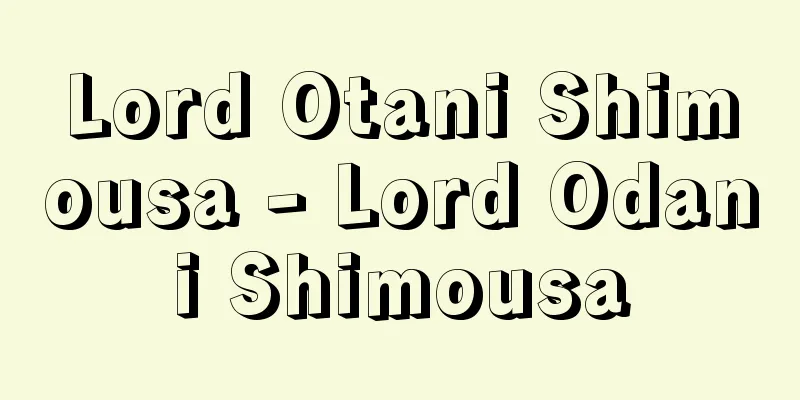"Okimiyage Imaori Jofu" - Okimiyage Imaori Jofu

|
...The story is based on the murder of five people by a Satsuma samurai in 1737 (Genbun 2). This incident had already been dramatized in puppet theater, such as Okimiyage Imaori Jofu, which premiered in Osaka in 1777 (An'ei 6), Kunikotobakudoki Ondo, which premiered in Osaka in 1888 (Tenmei 8), and Kabuki plays, such as Goningiri Gojuyu Nenkai, which premiered in Osaka in 1892 (Kansei 4), and Satsuma Bushi Gonin Kiriko, which premiered in Kyoto in the same year. This work was created based on those plays, but the names of Gengobei, Sangobei, and Koman in the Edo version (see below) were taken from Satsuma Uta by Chikamatsu Monzaemon. Sasano Sangobei, who encourages the young lord of the Chishima family to indulge in debauchery, persistently pursues Kikuno, a geisha from Sonezaki Shinchi in Osaka, so Kikuno asks Katsuma Gengobei to be her ostensible lover. From Sensuke Suga...There are 33 surviving works, of which 10 are solo works and 23 are collaborative works, spanning both historical and domestic dramas. However, he excelled in domestic dramas, and was notable for skillfully adapting and rewriting earlier works to create works suitable for the performance style of the time. Among his representative works of sewamono (domestic dramas), Kamikoji Tate Ryomen Kagami (1768), Date Musume Koi no Higanoko (A Daughter in Love with a Scarlet Deer) and Keisei Koibikiyaku (The Love Courier) (both 1773), Katsuragawa Renri no Shigarami (The Fences Ridden by the Katsura River) (1776), and Okimiyage Maori Jofu (A Souvenir Woven Fabric) (1777) are all adaptations, as is his representative period piece Setsu Yugatsupogatsuji (The Crossroads of the Union of the Provinces of Settsu) (1773). Other notable period pieces include Yushiyoku Kamakurayama (1789). *Some of the terminology used in reference to "Okisou Imaori Johfu" is listed below. Source | Heibonsha World Encyclopedia 2nd Edition | Information |
|
…1737年(元文2)大坂曾根崎新地の湯女(ゆな)菊野らが薩摩侍に殺された5人斬り事件を題材とする。この事件は人形浄瑠璃では77年(安永6)大坂初演の《置土産今織上布(おきみやげいまおりじようふ)》,88年(天明8)大坂初演の《国言詢音頭(くにことばくどきおんど)》,歌舞伎では92年(寛政4)大坂初演の《五人切五十年廻(ごにんぎりごじゆうねんかい)》,同年京都初演の《薩摩節五人切子(さつまぶしごにんきりこ)》などですでに劇化されており,本作はそれらをふまえて成立したが,源五兵衛,三五兵衛や江戸上演本(後述)の小万の名は近松門左衛門作《薩摩歌》から採った。千島家の若殿に遊蕩をすすめる笹野三五兵衛は,大坂曾根崎新地の芸子菊野にしつこく言い寄るので,菊野は勝間源五兵衛にうわべだけの愛人になってもらう。… 【菅専助】より…現存の作品数33編,そのうち単独作10編,合作23編で,時代物,世話物の双方にわたっているが,世話物のほうを得意とし,また先行作を巧みに翻案,改作して当時の上演様式にふさわしい作品に作り上げた点に特色がある。世話物の代表作のうち《紙子仕立両面鑑(かみこじたてりようめんかがみ)》(1768),《伊達娘恋緋鹿子(だてむすめこいのひがのこ)》《けいせい恋飛脚(こいびきやく)》(ともに1773),《桂川連理柵(かつらがわれんりのしがらみ)》(1776),《置土産今織上布(おきみやげいまおりじようふ)》(1777)は,いずれも改作物であり,時代物の代表作《摂州合邦辻(せつしゆうがつぽうがつじ)》(1773)も同種の作品である。時代物ではほかに《有職鎌倉山(ゆうしよくかまくらやま)》(1789)などが著名である。… ※「《置土産今織上布》」について言及している用語解説の一部を掲載しています。 出典|株式会社平凡社世界大百科事典 第2版について | 情報 |
>>: The Adventures of Auggie March
Recommend
Ruiju Myogisho - Ruiju Myogisho
An ancient Chinese character dictionary. It class...
Fruit drink - Kajitsuinryo
Beverages made from squeezed fruit juice. The Japa...
Continued Japanese Ojoden - Zokuhonchooujoden
This work follows on from Nihon Ojo Gokurakuki and...
New edition of Aizu Fudoki
A representative geographical book of the Edo per...
Mount Goryu
A mountain in the Hida Mountain Range, on the bord...
Wright, Richard
Born September 4, 1908, near Natchez, Mississippi ...
Open Space
In urban planning, this refers to permanent open s...
Industrial defense struggle
Based on the Nine Principles for Economic Stabilit...
Life - Life (English spelling)
An American graphic magazine. It was first publis...
Sword - Tachi
A style of Japanese sword. When worn, it is hung ...
Mr. Matano
A medieval samurai family from Sagami. A branch of...
Opel [company] - Opel
…GM also built knockdown (local assembly) plants ...
Kuramae Need - Kuramae Need
〘Noun〙 In the Edo period, Takakakarimono (high-ran...
Eid al-Adha
A Muslim holiday. The 10th to 13th of the 12th mon...
Sesonji-ryu
It is a school of calligraphy. Its founder was Fu...









